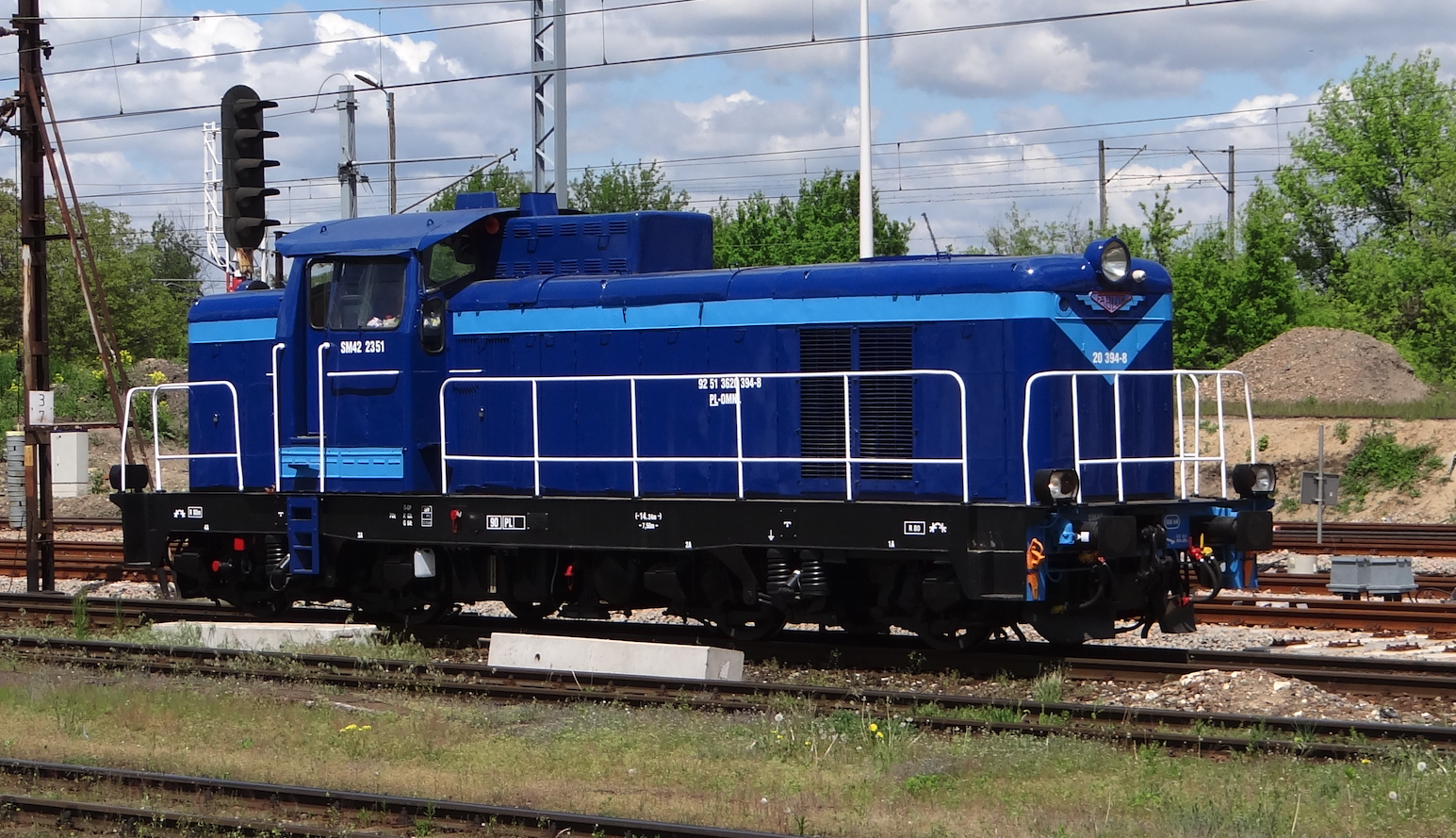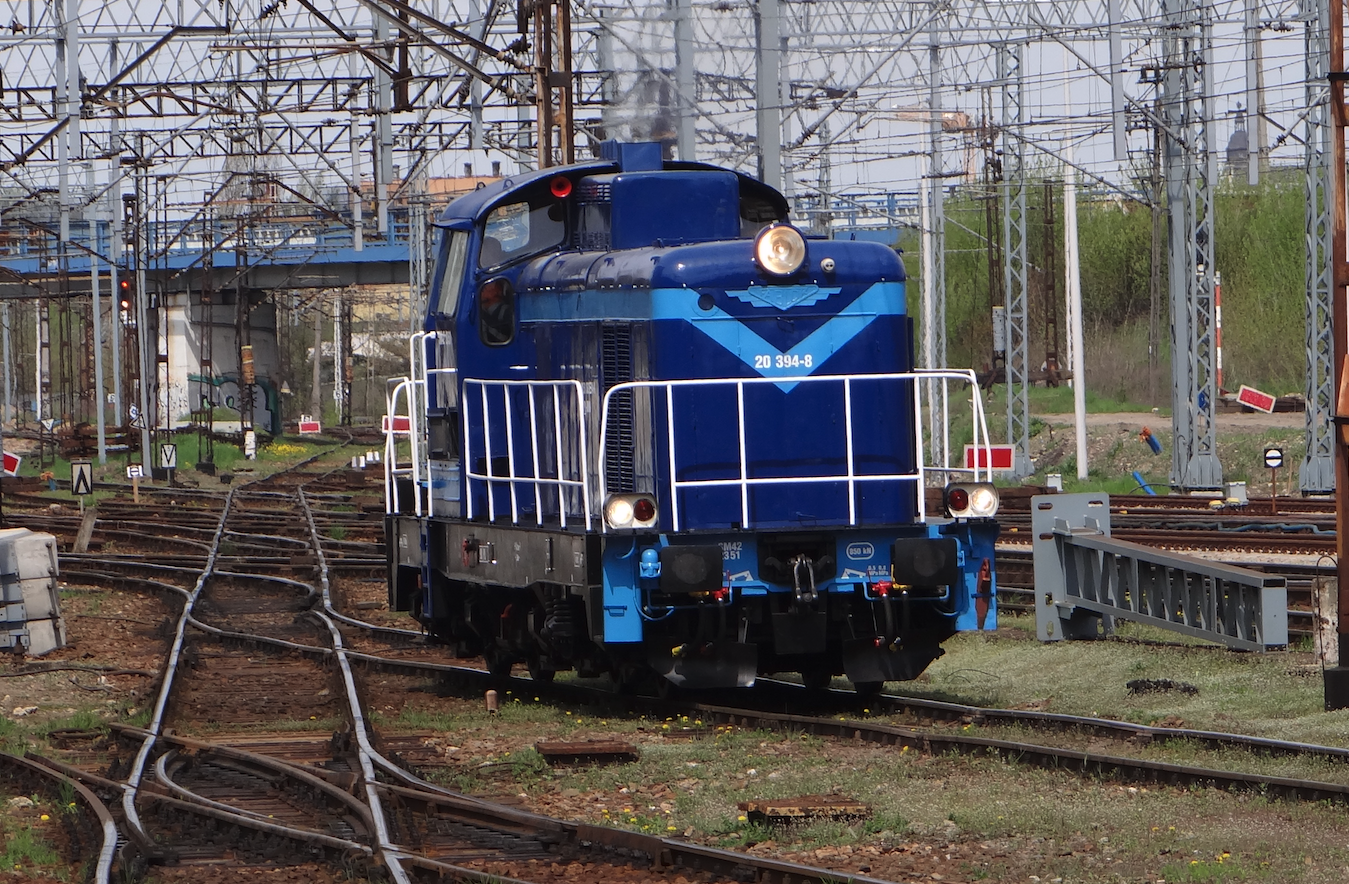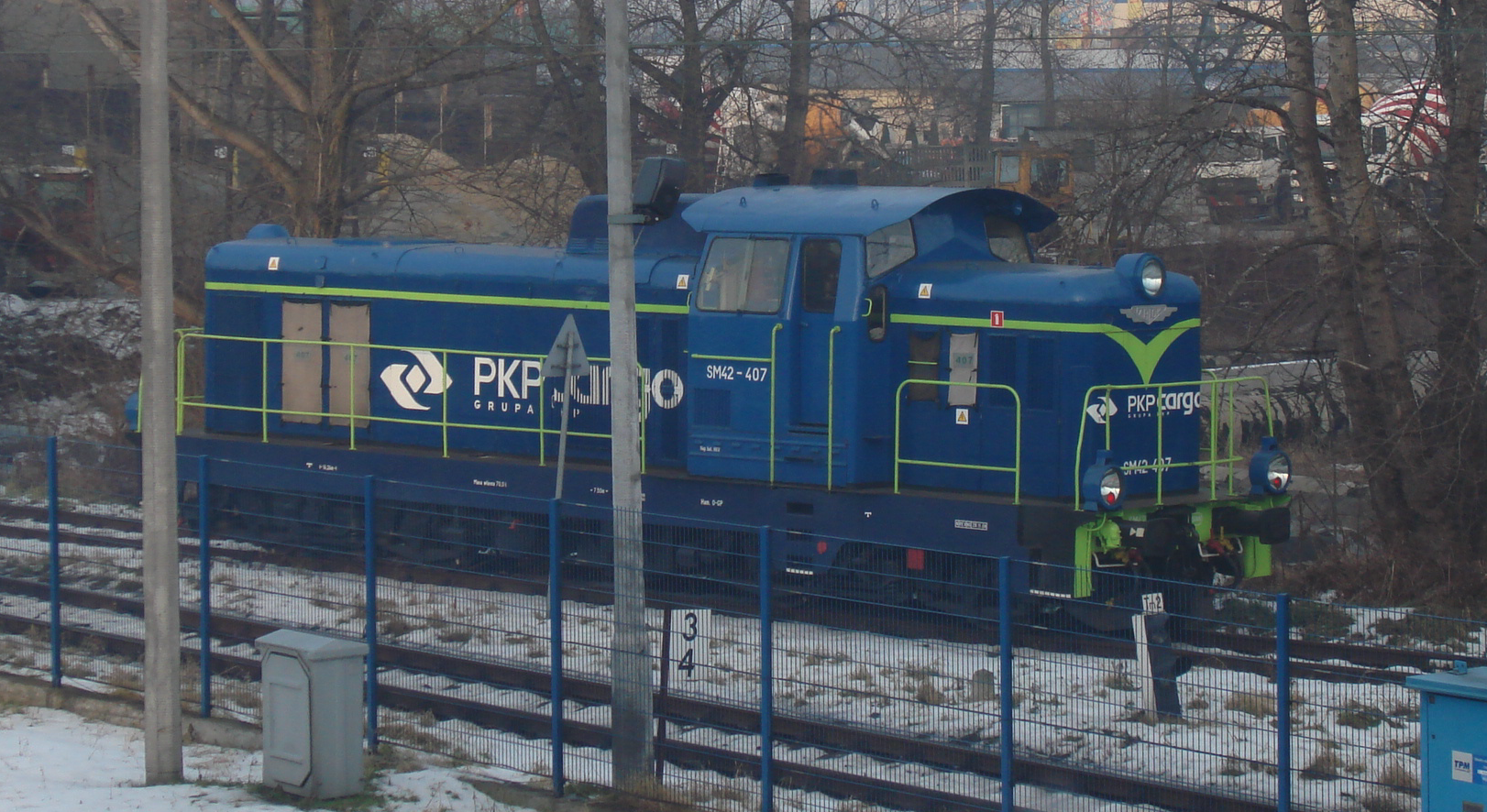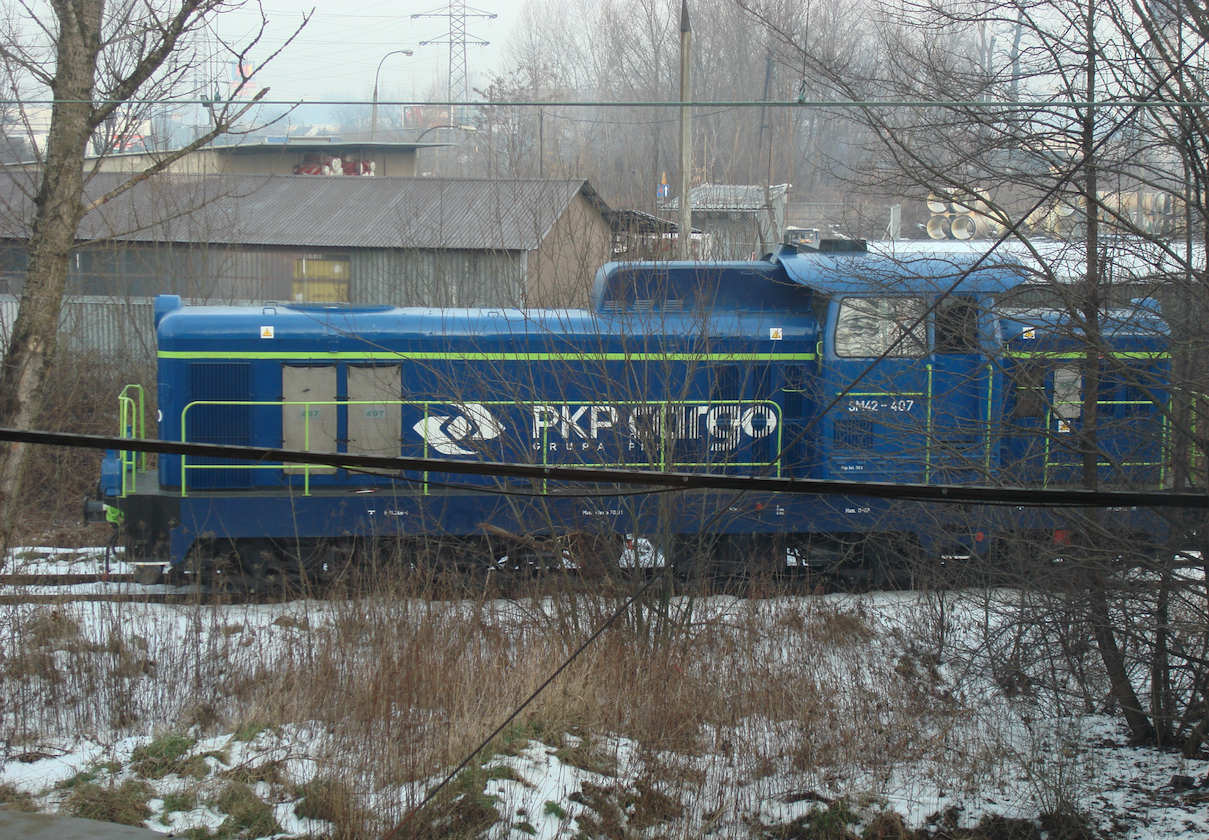Kraków 2021-12-09
Type 6D diesel locomotive (Ls800E), marked in PKP SM42.
In the period 1958 - 1962, the Central Office of Rolling Stock Industry Design in Poznań developed the technical documentation for a medium-power diesel locomotive, which was marked in the office as type 6D. The locomotive was modeled on the layout of the SM30 (Ls300E) locomotive and the solutions of locomotives imported from Hungary, SM40.




In the period 1958 - 1962, the Central Office of Rolling Stock Industry Design in Poznań developed the technical documentation for a medium-power diesel locomotive, which was marked in the office as type 6D. The locomotive was modeled on the layout of the SM30 (Ls300E) locomotive and the solutions of locomotives imported from Hungary, SM40.
The production of the prototype was commissioned to the "Fablok" Locomotive Factory in Chrzanów. In December 1963, a prototype of the Ls800E locomotive, factory number 6276, was ready for technical tests. In the marking: L - locomotive, S - diesel engine, 800 engine power (KM), E - electric transmission. This locomotive in the Polish State Railways was designated SM42-001. In the marking: S - diesel, M - maneuvering, 42 - model, 001 - sequential number.
Despite marking the SM42 locomotive as a shunting locomotive, the Polish State Railways actually wanted machines for lighter trains of passenger and freight trains on non-electrified routes, so as not to send the heavy ST43, ST44 locomotives. The SM42 locomotives revived passenger traffic on local routes and gradually replaced the heavy steam locomotives.
The first locomotive was sent to Warsaw to the Odolany depot and was tested with passenger trains on the Warsaw Gdańsk - Działdowo route. The trail was not electrified at the time. The service team from the "Fablok" factory removed the defects on an ongoing basis. In 1964, two more SM42 locomotives were built, followed by a pre-production series of 10. The locomotives were doing very well. With the start of serial production, almost all SM42 locomotives were purchased by PKP.
Work on reducing production costs and facilitating the operation of the locomotive continued. Among other things, the new type 1LN bogies were developed. Access to the braking system has been made easier for service personnel. This is how the second-performance locomotive was created, which was produced from 1972, from the SM42-521.
From 1970, SM42 locomotives were also purchased by industrial plants: steel mills, mines and quarries. For the industry, the SM42 locomotives had only one fuel tank and multiple steering was abandoned. In the period 1963 - 1992, 1,822 SM42 locomotives were built in total.
Locomotive 101D (SP42).
At the end of the 60s, there was a problem of heating passenger cars equipped with a steam heating system. Special heating wagons were removed from the state of the Polish State Railways due to their wear and tear. Therefore, on the basis of the SM42 locomotive, the SP42 (passenger) locomotive was built, designated 101D, which was commonly called "Kocioł". WB5 diesel-powered steam boilers were manufactured at the Industrial Plant in Brzeg. The boiler had a capacity of 525 kg of steam per hour. Steam lines were led from the boiler to the locomotive's headstock. In addition, a water tank was installed under the locomotive's mainstay. Additionally, the locomotive was designed in such a way that it could be moved to a wide track. The endcarriages could be fitted with the Russian SA3 coupler. In the period 1971-1978, 268 locomotives 101D (SP42) were built in Chrzanów.
Locomotive 101D (SU42).
Due to the gradual departure from steam-heated passenger cars, the problem of heating passenger cars by SM42 locomotives has returned. At that time, the ZNTK in Nowy Sącz was commissioned to convert the SP42 locomotives into 3 kV electric heating. A power generator was installed in place of the existing boiler. The generator consisted of an imported Catepillar diesel engine of the CAT3208 type, 245 HP, and a three-phase generator with a rectifying system that supplied a direct current of 3 kV. Electric sockets for connecting the wagons are installed in the endcarriages. In the period 1999 - 2000, 40 locomotives in Nowy Sącz were modernized and given the designation SU42 and new inventory numbers from 501 to 540.
Locomotive 6Dc.
In 1996, the Design Office at ZNTK Piła, in cooperation with OBRPS and CBK PKP, developed a project to modernize a 6D locomotive. The modernization was based on components purchased in Western Europe. Used: 1,000 HP MTU engine, alternating current generator, wheel flange lubrication system, halogen headlamps, radio remote control, new driver's cab. The rebuilt locomotive was designated SM42-2000. It was the first attempt to modernize the SM42 locomotive.
Construction SM42 (6D).
The locomotive is constructed using a 8-cylinder V-combustion engine a8C22, 800 HP, main generator LSPa-740, 485 kW, four LSa-430 electric traction motors with a continuous power of 101 kW. The electrical equipment is completed by an auxiliary generator LSPu-280 with a power of 10 kW and a battery bank. The air brake of the Oerlikon system is supported by a hand brake acting on one rear carriage of the locomotive.
A8C22 diesel engines were produced by Zakłady Przemysłu Metalowego im. H. Cegielski in Poznań. The capacity of the fuel tanks is 2,840 liters. The SM42 locomotive is adapted to multiple work in a set of two locomotives, unless modifications have been made.
Data T-T Locomotive SM42:
Bo'Bo 'axle system. Wheel diameter 1.10 m. Overall length 14.24 m. Width 3.17 m. Height 4.40 m. Empty weight 64,000 kg. Service weight 71,000 kg. Top speed 90 km / h.
Written by Karol Placha Hetman
